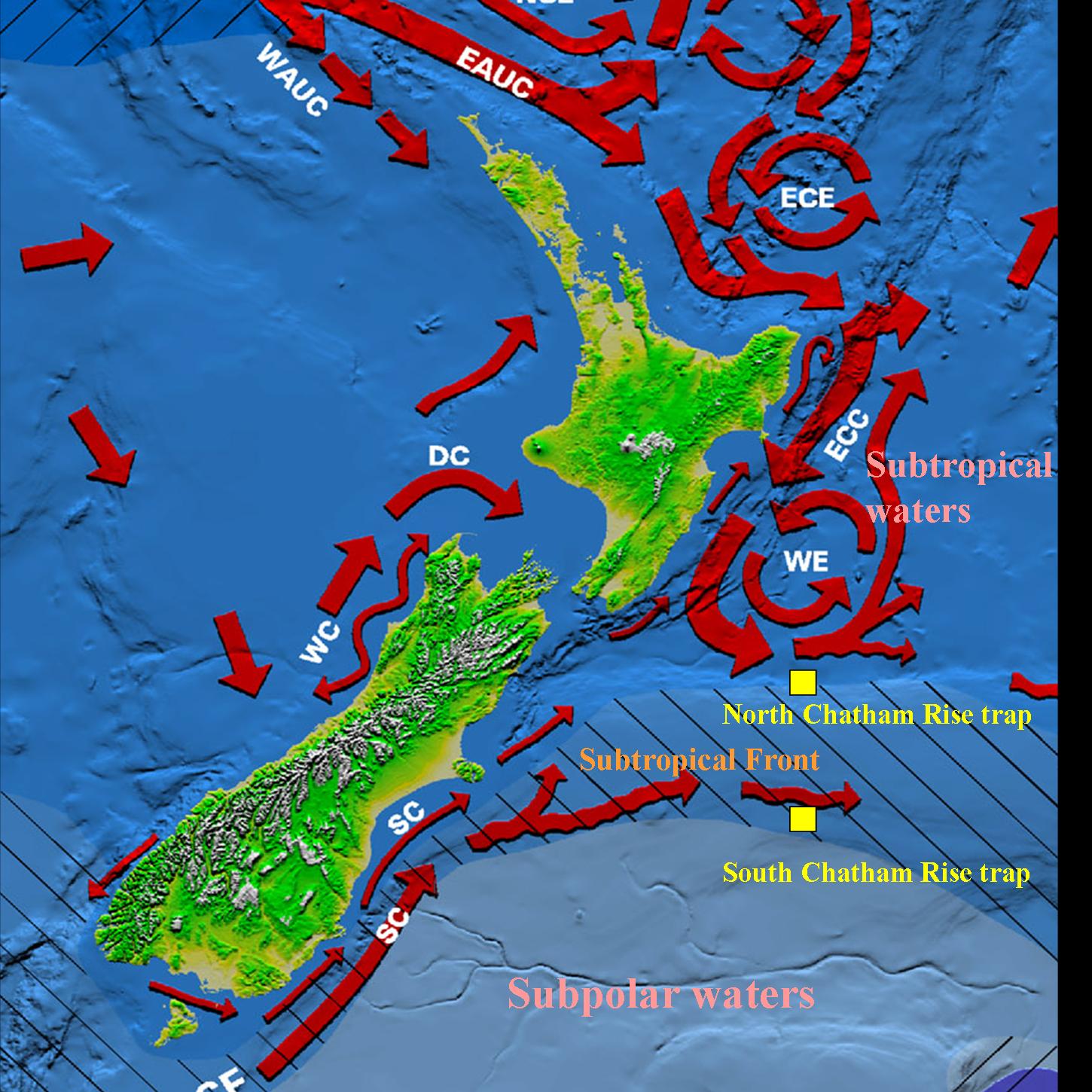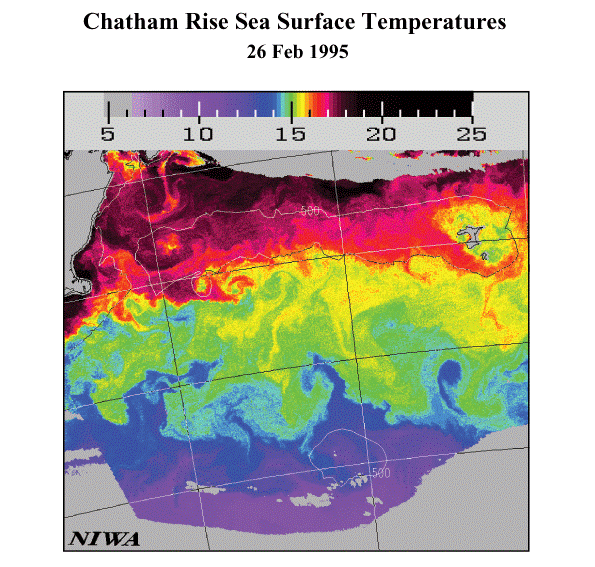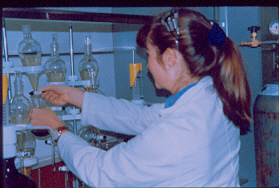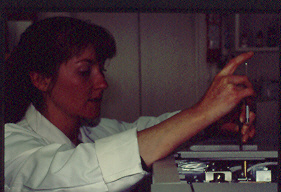I continue to work with alkenone temperature estimation in modern samples to elucidate the controls on temperature proxies as they are produced. I am comparing the relative timing of the fluxes and the temperature estimates of UK'37 with foraminiferal-based techniques (assemblages and δ18O), along with additional biomarkers and bulk fluxes in sediment traps. My results show that the differences between the responses of each of these biologically based estimates suggests that the organisms responds differently to their environment and this impacts temperature reconstructions across climatic shifts. We are presently applying our new understanding of these productivity differences to down-core paleo-studies to better interpret the offsets in timing between different proxies and their impacts on paleoclimatic records.
New Zealand Map
We have sediment traps deployed on the Chatham Rise that have been collecting a time series of fluxes for the last decade. |
Chatham Rise Sea Surface Temperature

We are interested in the Chatham Rise because the temperature changes dramatically across the rise from Subtropical waters to the north and Subantarctic waters to the south. |
Wet Chemistry

After collecting the samples from the traps we process the samples. The samples are shared out to different labs, and we collect the fractions we are interested in. In our lab we focus on the lipid portion of the organic matter. |
Injecting a Sample
After processing the sample we analyze it on a gas chromatograph (GC) or a GC-mass spec to determine its composition. |